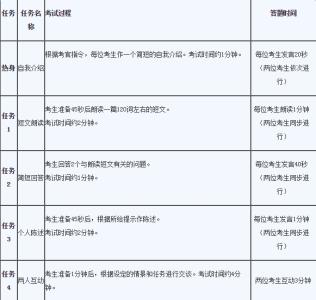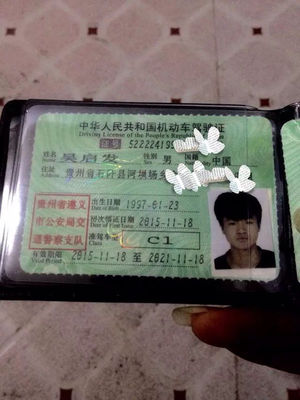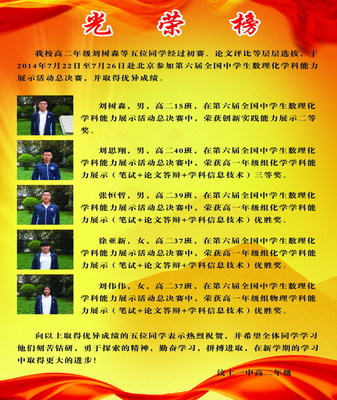2014年大学英语四级口语考试要求
大学四、六级英语考试的口语考试,每场考试都由两名主考主持、3名考生参加,时间为20分钟。考试由3部分组成。第一部分主要是“热身”练习,先由每位考生作一个简短的自我介绍,目的是使考生进入良好的应考状态,以利发挥自己的英语口语水平;然后,主考老师对每位考生逐一提问,所提的问题根据每次考试的话题而定,每位考生回答一个问题。时间约5分钟。第二部分是考试的重点部分,主要考核考生用英语进行连贯的口头表达能力,以及传达信息、发表意见、参与讨论和进行辩论等口头交际能力。主考先向每位考生提供文字或图片等形式的提示信息,让考生准备1分钟,然后要求每位考生就所给信息作1分半钟时间的发言,此后,主考要求考生根据发言的内容,就规定的话题进行小组讨论,尽量取得一致意见。时间共约10分钟。第三部分由主考再次提问以进一步确定考生的口头交际能力。时间约5分钟。考试内容一、语言功能CET-SET考试要求考生参与不同形式的口头交际,其语言能力将根据其在考试中的表现进行测定。考生需要掌握的语言功能和意念在《大学英语教学大纲》中已明确列出。以下作为举例列举其中部分语言功能和意念。友好往来问候,介绍,告别和告辞,祝愿和祝贺,感谢和应答,道歉和应答,提议、邀请和应答。相互交流开始交谈,继续交谈,改变话题,停止交谈。态度愿意,希望,意向,决心,责任,能力,允许,禁止,同意和不同意,否定,喜欢和不喜欢,偏爱,责怪和抱怨,判断、决定和意见。劝说命令,劝告和建议,承诺,提醒。感情焦虑,惊奇,兴趣,加重感情色彩。存在和不存在,有和没有。空间描述位置,方向,运动,距离。时间、时刻,时段,时间关系,频度,时序。发表意见和看法询问意见和看法,发表意见和看法,对意见和看法的反应,同意,不同意,要求澄清,澄清意见和看法。争辩讨论,讨论观点,反驳论点,提出进一步论证,劝说和对劝说的反应。
二、输入信息CET-SET考试运用以下两种形式的输入信息来产生信息差:1.画面提示(如图片、图表、照片等);2.文字提示。口语考试成绩与证书大学英语四、六级考试口语考试分为A、B、C、D四个等级。A等:能用英语就熟悉的题材进行口头交际,基本上没有困难。B等:能用英语就熟悉的题材进行口头交际,虽有些困难,但不影响交际。C等:能用英语就熟悉的题材进行简单的口头交际。D等:尚不具有英语口头交际能力。大学英语四、六级考试口语考试成绩合格者由教育部高等教育司发给证书。证书分为三个等级:A等、B等和C等。考试成绩为D等者不发给证书。凡在两年内参加过大学英语四级考试,且四级成绩在560分以上的考生,均可报名参加大学英语四级口语考试。大学英语四级考试口试在每年的五月份和十一月分举行。报名时间为第年的三月份和九月份。
2014年大学英语四级考试口语考试样题
CET Spoken English Test
Sample Paper
Topic A - 1
Topic Area : City Life
Topic : City Traffic
Part 1 (5 minutes)
Examiner:
Good morning (Good afternoon), everybody. Could you please tell me your name and the number of your admission ticket? Your name, please. And your number? … Your name? … And your number? ... Thank you.
Now would you please briefly introduce yourselves to each other? Remember, you should not mention the name of your university. (1.5 minutes)
OK, now that we know each other we can do some group work. First of all, I'd like to ask each of you to say something about life in the city.
[ C1, C2, C3 ]
1) How do you like living in Beijing ( Shanghai , Nanjing …)?
2) What do you think is the most serious challenge of living in a city like Beijing ( Shanghai , Nanjing …)?
3) How do you like shopping in a supermarket?
4) Where would you like to live, downtown or in the suburbs, and why?
5) What measures do you think we should take to reduce air pollution in Beijing ( Shanghai , Nanjing …)?
6) Can you say something about the entertainment available in your city?
7) Where would you like to find a job after graduation, in a big city like Beijing or Shanghai or in a small town and why?
8) What's your impression of the people in Beijing ( Shanghai , Nanjing …)? Part 2 (10 minutes)
Examiner:
Now let's move on to something more specific. The topic for our discussion today is “City Traffic”. You'll have a picture (some pictures) showing two different types of transport. I'd like each of you to give a brief description of each type and then compare the t
wo types. You'll have one minute to prepare and each of you will have one and a half minutes to talk about the picture(s). Don't worry if I interrupt you at the end of the time limit. Now here are your pictures.
[1 minute later]
Now, [ C1 ], would you please start first? [ C2 ] and [ C3 ], please put your pictures aside and listen to what [ C1 ] has to say.
[1.5 minutes later] OK. [ C2 ], now it's your turn.
[1.5 minutes later] OK, [ C3 ], and now it's your turn.
Right. Now we all have some idea of various kinds of city transport. I'd like you to discuss this topic further and see if you can agree on which is the best type of transport for a big city like Beijing ( Shanghai , Nanjing …). During the discussion you may argue with each other or ask each other questions to clarify a point. You will have about four and a half minutes for the discussion. Your performance will be judged according to your contributions to the discussion.
[If one candidate talks too long]
Sorry, I'll have to stop you now. Let's listen to what [ C? ] has to say.
[If one candidate keeps silent for a long time] / [If the group is silent for some time, then ask one of the candidates to start the discussion.]
Now, [ C? ], could you please say something about your view of …?
[4.5 minutes later]
All right, that's the end of the discussion.
Part 3 (5 minutes)
Examiner:
Now I'd like to ask you just one last question on the topic of “City Traffic”.
[Select a question from the following list to ask each of the candidates.]
[ C1 or C2 or C3 ]
· During the discussion, why did you say that ... ?
· What kind of transport do you usually use in your city?
· Do you have any suggestions as to how traffic conditions can be improved in big cities?
· Do you think private cars should be encouraged?
· Why do you think some Western countries encourage people to ride bicycles? Now, that's the end of the test. Thank you, everybody.
大学英语四、六级考试口语考试大纲
一、评分标准
CET-SET 主考在评分时使用以下标准:
a. 准确性 指考生的语音、语调以及所使用的语法和词汇的准确程度
b. 语言范围 指考生使用的词汇和语法结构的复杂程度和范围
c. 话语的长短 指考生对整个考试中的交际所作的贡献、讲话的多少
d. 连贯性 指考生有能力进行较长时间的、语言连贯的发言
e. 灵活性 指考生应付不同情景和话题的能力
f. 适切性 指考生根据不同场合选用适当确切的语言的能力
二、语言功能
CET-SET 考试要求考生参与不同形式的口头交际,其语言能力将根据其在考试中的表现予以测量。考生需要掌握的语言功能和意念在《大学英语教学大纲》中已明确列出。以下仅列举其中部分的语言功能和意念。
友好往来
问候,介绍,告别和告辞,祝愿和祝贺,感谢和应答,道歉和应答,提议、邀请和应答。
相互交流
开始交谈,继续交谈,改变话题,停止交谈。
态度

愿意,希望,意向,决心,责任,能力,允许,禁止,同意和不同意, 否定,喜欢和不喜欢,偏爱,责怪和抱怨,判断、决定和意见。
劝说
命令,劝告和建议,承诺,提醒。
感情
焦虑,惊奇,兴趣,加重感情色彩。
存在
存在和不存在,有和没有。
空间描述
位置,方向,运动,距离。
时间
时刻,时段,时间关系,频度,时序。
发表意见和看法
询问意见和看法,发表意见和看法,对意见和看法的反应,同意,不同意,要求澄清,澄清意见和看法。 争辩
讨论,讨论观点,反驳论点,提出进一步论证,劝说和对劝说的反应。
三、考试形式
CET-SET 考试分三部分:
第一部分是考生和 CET 授权的主考进行交谈,采用问答的形式。时间约 5 分钟。
第二部分包括 1.5 分钟的考生个人发言和 4.5 分钟的小组讨论。时间共约 10 分钟。
第三部分由主考再次提问以进一步确定考生的口头交际能力。时间约 5 分钟。
四、输入信息
CET-SET 考试运用以下两种形式的输入信息来产生信息差: 1 )画面提示(如图片、图表、照片等);
2 )文字提示。
五、标准描述
爱华网 www.aIhUaU.com欢迎您转载
 爱华网
爱华网



